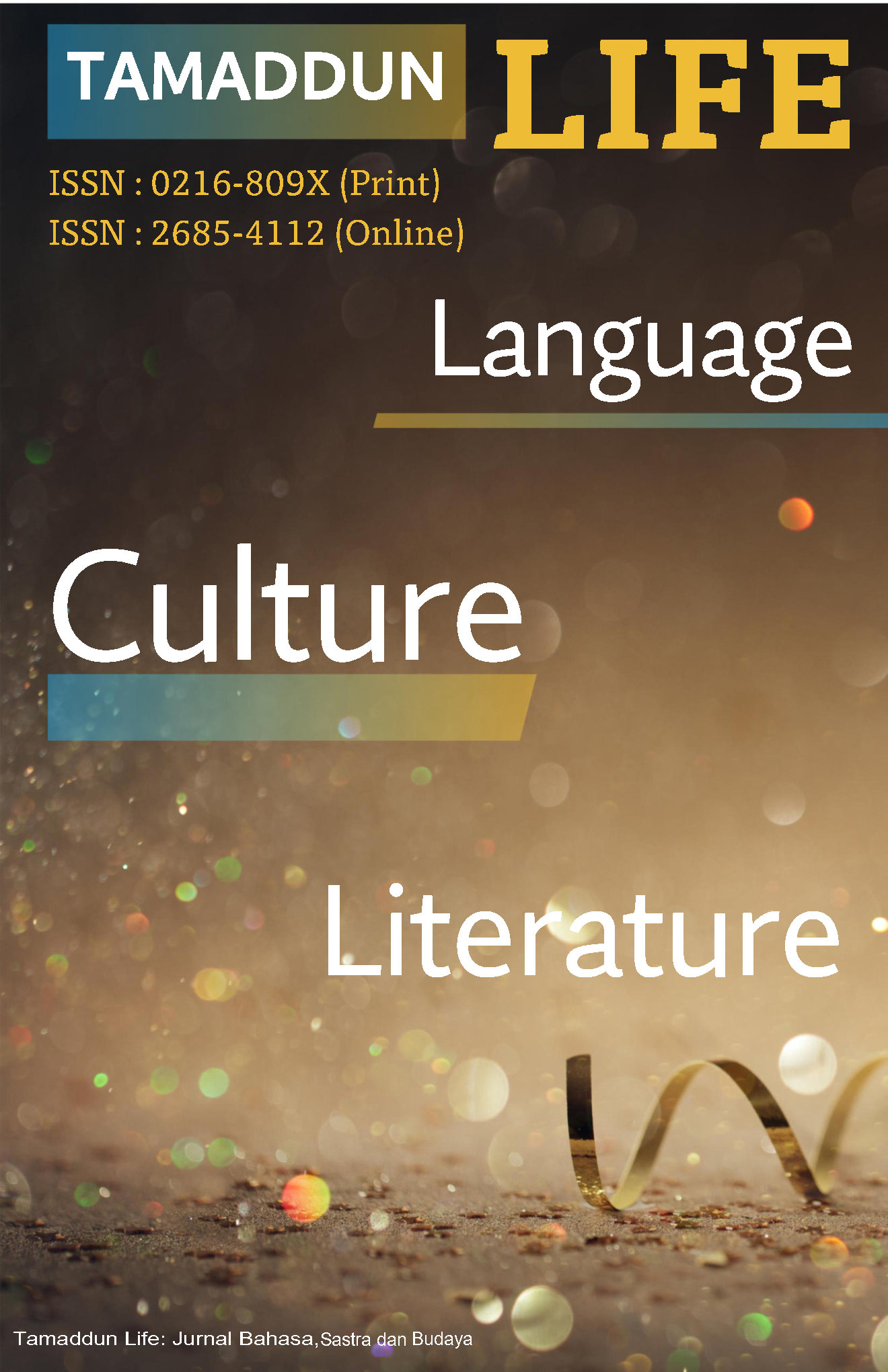The Realization of Adverb –Ly in English Sentences
DOI:
https://doi.org/10.33096/tamaddun.v21i2.215Keywords:
Adverb, Modifier, Semantic Meaning, EFL ContextAbstract
The objective of the study is to find the realization of Adverb -ly in sentences. This study is descriptive qualitative which is carried out through the process of providing data, the data analysis stage, and the systematic stage of presenting the results of data analysis. In the data analysis stage, the data that has been collected is sorted according to their respective categories and given further descriptions and explanations. The result shows 1. The position of the adverb –ly can be placed in three positions, the beginning of the sentence (before the subject), the middle of the sentence (before the verb), and the end of the sentence (after the main clause). 2. Adverb –ly in a sentence can modify if it is in the form of a phrase, in the construction of comparative sentences, modifying 'however' to open a clause, modifying 'how' in an exclamation sentence, and modifying 'so' which is followed by the subject. and clauses. 3. Based on its semantic meaning the adverb -ly can have several meanings: point of view, as an emphasizer, as a maximiser, as a booster, as a minimizer, and as instrument. The research answers the realization of the adverb –ly can be in various places in English sentences, but the semantic meaning can be different. The present study implicates on adverbs having distinct semantic orientations, which provides natural reference materials for teaching and learning English in the EFL context.
References
Ahearn, Laura M. (2012). Living Language An Introduction to Linguistic Anthropology. Singapore: Ho Printing Singapore Pte Ltd
Chaer, Abdul. (2012). Linguistik Umum. Jakarta: Rineka Cipta
Choderin, Mochamad. (2014). Adverbia dalam Bahasa Inggris dan Bahasa Arab: Analisis Kontrastif. Tesis. Yogyakarta: Universitas Gadjah Mada
Glencoe. (2001). Writer’s Choice: Grammar and Composition Grade 6. New York: McGraw-Hill Companies
Keraf, Gorys. (1986). Tata Bahasa Indonesia. Ende: Nusa Indah
Kridalaksana, Harimurti. (2011). Kamus Linguistik. Jakarta: PT Gramedia Pustaka Utama
Lambert V, Lambert C. Qualitative Descriptive Research: An Acceptable Design. Pacific Rim International Journal of Nursing Research [Internet]. 16(4):255-6 Available from: https://www.tcithaijo.org/index.php/PRIJNR/article/vi
Lightbown, P. M. and Spada, Nina. (1999). How Languages are Learned. 2 nd ed.Oxford: University Press
Nassaji, H. (2015). Language Teaching Research: Qualitative and Descriptive Research: Data Type versus Data Analysis Vol. 19(2) 129–132. sagepub.co.uk/journalsPermissions.nav
Nur, Junaidah. (2009). Klausa Adverbial Waktu dalam Bahasa Indonesia dan Bahasa Inggris: Analisis Kontrastif. Tesis. Yogyakarta: Universitas Gadjah Mada
Parera, J.D. (2004). Teori Semantik edisi ke 2. Jakarta: Penerbit Erlangga
Quirk, Randolph dan Greenbaum, Sidney. (1979). A University of English. London: English Language Book Society & Longman Group Limited
Ridge, E. (2011). Keiko Koda. (2005). Insights into Second Language Reading: A Cross-Linguistic Approach. Cambridge University Press. Per Linguam, 24(2). https://doi.org/10.5785/24-2-46
Saaristo, P. (2015). Grammar is the heart of language: Grammar and its role in language learning among Finnish university students. In J. Jalkanen, E. Jokinen, & P. Taalas (Eds.), Voices of pedagogical development – Expanding, enhancing and exploring higher education language learning (pp. 279–318). Research-publishing.net. https://doi.org/10.14705/rpnet.2015.000296
Thomson, A.J. dan Martinet, A.V. (1969). A Practical English Grammar, Second Edition. London: Oxford University Press
Wierzbicka, Anna. (1997). Understanding Cultures through Their Key Words: English, Russian, Polish, German, and Japanese. New York: Oxford University Press
Wren dan Martins. (1979). High School English Grammar and Composition, Revised and Adapted by Serkis, S.J. Seventh Edition. New Delhi: S. Chand and Company, LTD
Downloads
Published
Issue
Section
License
Authors who publish with Tamaddun journal agree to the following terms:
1. Authors retain the copyright and grant Tamaddun the right of first publication. The work will be licensed under a Creative Commons Attribution License (CC BY 4.0), which permits others to share the work with proper acknowledgment of the authorship and initial publication in this journal.
2. Authors may enter into additional non-exclusive agreements for the distribution of the published version of their work (e.g., posting it to an institutional repository or including it in a book), provided that the initial publication in this journal is acknowledged.
3. Authors are encouraged to post their work online (e.g., in institutional repositories or on their personal websites) before and during the submission process. This can lead to productive exchanges and increase the visibility and citation of the published work.






